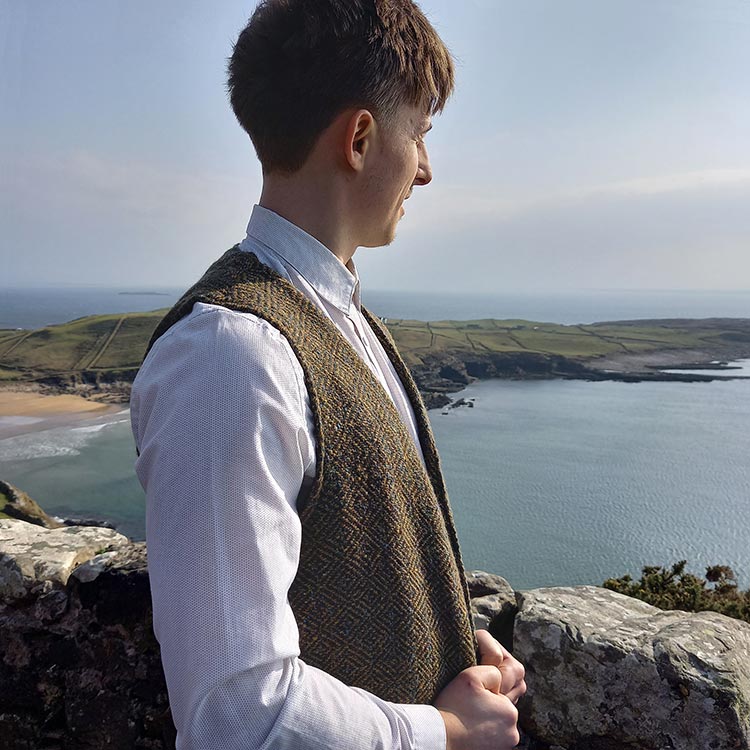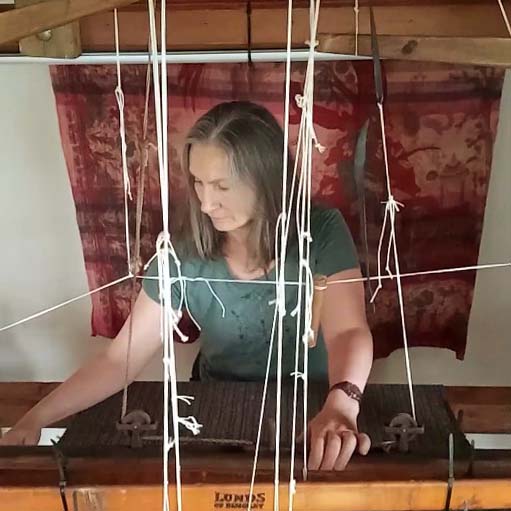
Little Red Hen Tweed is hand woven in the traditional style using
locally produced yarn. The tweed is made in Kilcar in South West Donegal
an area synonymous with tweed production for over 150 years.
The loom is a wooden construction where a series of levers raise and
lower threaded eyelets to create the desired pattern. The weaver takes
the yarn from the cone to the finished fabric. The process takes time
and patience to create a unique piece of sustainable, biodegradable,
slow fashion.

In a world of fast fashion and mass production, Donegal Tweed stands as
a symbol of craftsmanship, heritage, and enduring style.
Handwoven in the rugged landscapes of County Donegal,
Ireland, this iconic fabric captures the spirit of the land—its wild
beauty, rolling hills, and ever-changing skies—all woven into every
thread.
What makes Donegal Tweed truly special is its
artisanal process.
Using traditional techniques passed down
through generations, weavers craft each piece by hand on wooden looms.
Flecks of color—known as “neps”—are carefully blended into the weave,
mimicking the hues of the Irish countryside, from golden gorse and mossy
greens to deep ocean blues and earthy browns.
